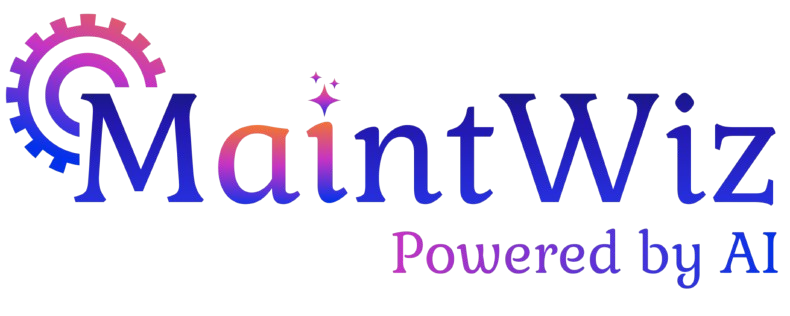
Effective inspection techniques are vital for ensuring the smooth operation of industrial plants. They help identify potential problems before they lead to downtime or safety hazards, improving efficiency and reducing maintenance costs. As a plant maintenance engineer, it’s essential to have a good understanding of inspection techniques and how to apply them effectively.
In this post, we’ll discuss the top 5 inspection techniques that every plant maintenance engineer should know. These techniques are widely used across different industries and can help you improve your plant’s efficiency, safety, and compliance.
Table of Contents
Visual Inspection
Visual inspection is one of the most basic yet effective techniques for detecting faults and abnormalities in plant equipment. This technique involves visually inspecting equipment for signs of damage, wear and tear, leaks, and other issues that may affect its performance.
Visual inspections are a critical component of a comprehensive maintenance strategy and can be performed on a routine basis, such as daily or weekly, or after a significant event, such as equipment shutdown or maintenance work. To ensure an effective visual inspection, it is essential to have a checklist that covers all critical equipment and areas of the plant, as well as a clear understanding of what to look for and how to identify issues. By incorporating preventive maintenance measures like visual inspections into your maintenance program, you can detect potential issues before they turn into costly breakdowns.
Modern technologies such as drones and cameras can also be used to enhance visual inspection, allowing you to access hard-to-reach areas or inspect equipment in real-time from a safe distance.
Non-Destructive Testing
Non-destructive testing (NDT) is a technique used to detect faults and defects in materials and structures without causing damage to them. This technique involves using various methods, such as ultrasonic testing, X-ray inspection, and magnetic particle testing, to inspect the internal structure and composition of materials and equipment.
NDT is commonly used in the inspection of pressure vessels, pipelines, storage tanks, and other critical components of industrial plants. It can help identify issues such as cracks, corrosion, and fatigue that may compromise the integrity of the equipment.
Vibration Analysis
Vibration analysis is a technique used to monitor the vibrations of equipment and identify potential faults and defects. This technique involves installing vibration sensors on equipment and analyzing the frequency, amplitude, and pattern of the vibrations.
Vibration analysis can help detect issues such as misalignment, unbalance, bearing wear, and looseness that may affect the performance of equipment. It can also help predict equipment failure and allow for proactive maintenance and replacement.
Thermography
Thermography is a technique used to detect temperature variations in equipment and identify potential issues such as overheating, insulation problems, and electrical faults. This technique involves using an infrared camera to capture images of equipment and analyzing the temperature patterns.
Thermography is commonly used in electrical systems, motors, and bearings. It can help identify issues that may lead to equipment failure or safety hazards and allow for timely maintenance and replacement.
Oil Analysis
Oil analysis is an essential component of condition monitoring, a technique used to monitor the condition of lubricants and detect potential issues such as contamination, degradation, and wear particles. This technique involves taking samples of the lubricant and analyzing them for various parameters such as viscosity, acidity, and metal content.
Oil analysis can help detect issues such as bearing wear, gear wear, and fluid contamination that may lead to equipment failure or reduced efficiency. It can also help optimize maintenance schedules and reduce maintenance costs by identifying equipment that requires oil changes or component replacements.
Benefits of Equipment Inspection
Regular inspections can help identify potential issues early, allowing for timely maintenance and repair, ultimately resulting in a more efficient and profitable operation. Benefits of regular inspection include
Increased Equipment Life: Regular inspections can identify potential issues before they become major problems, extending the life of equipment.
Improved Safety:
Inspections can identify safety hazards, reducing the risk of accidents and injuries in the workplace.
Reduced Downtime:
Early detection of issues can prevent equipment breakdowns, reducing downtime and improving productivity.
Cost Savings:
Inspections can help identify issues before they cause major damage, reducing repair costs and improving overall maintenance efficiency.
Compliance:
Inspections can help ensure compliance with regulations and standards, reducing the risk of fines or legal action.
Equipment inspection is crucial for improving equipment life, safety, productivity, cost savings, and compliance.
Conclusion
These five inspection techniques are essential for every plant maintenance engineer to know. By applying these techniques effectively, you can improve the efficiency, safety, and compliance of your industrial plant, and reduce maintenance costs and downtime. It’s also important to note that these techniques are not mutually exclusive and can be used in combination to enhance the effectiveness of your inspection program.
If you’re looking to improve your plant’s inspection program, consider partnering with an experienced inspection services provider. They can help you implement a comprehensive inspection program that covers all critical equipment and areas of the plant, and utilize advanced technologies and data analysis tools to enhance the effectiveness of your program.
Don’t wait until it’s too late to implement effective inspection techniques in your industrial plant. Contact us today to learn how our inspection services can help you improve your plant’s efficiency, safety, and compliance, and reduce maintenance costs and downtime.

Jai Balachandran is an industry expert with a proven track record in driving digital transformation and Industry 4.0 technologies. With a rich background in asset management, plant maintenance, connected systems, TPM and reliability initiatives, he brings unparalleled insight and delivery excellence to Plant Operations.
Recent Posts
- From Chaos to Order: Simplifying Maintenance Management with Technology
- From Crisis to Control:Regaining Stability with Effective Breakdown Response
- Avoiding Pitfalls: The 7 Biggest Mistakes Plant Managers Make in Maintenance
- Quality Matters: Improve OEE by Reducing Defects and Rework with MaintWiz CMMS
- How to Implement an Effective Lubrication Program for Your Plant Maintenance Strategy
Recent Comments
Company




